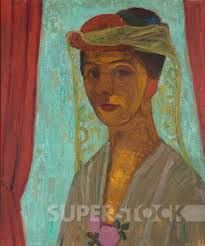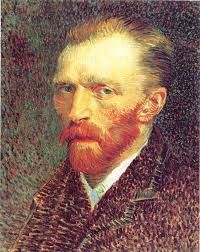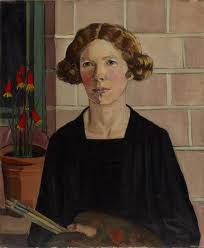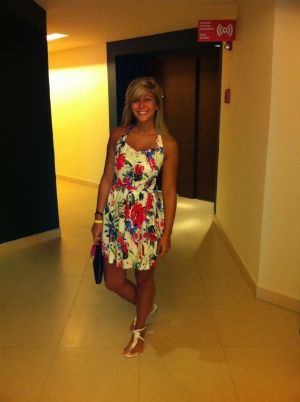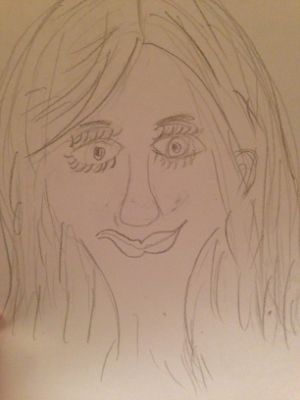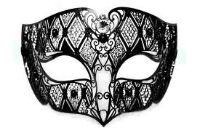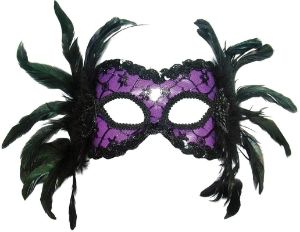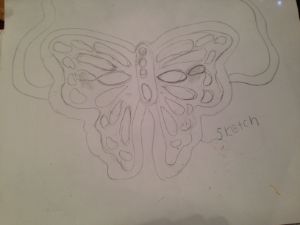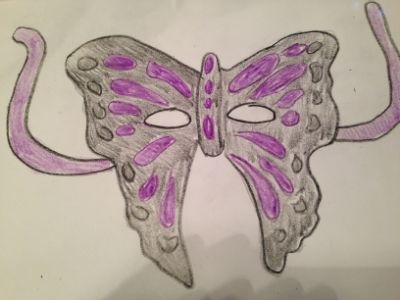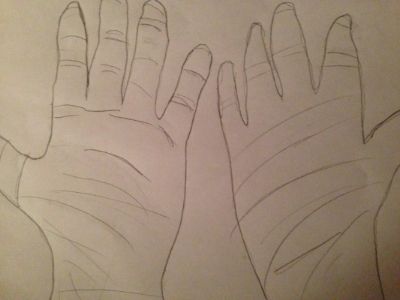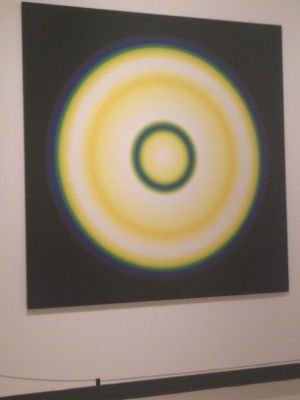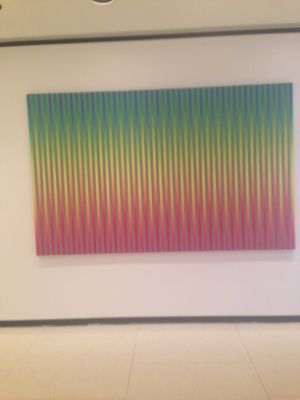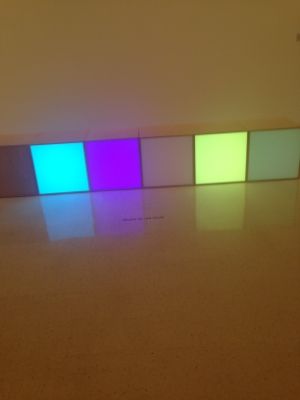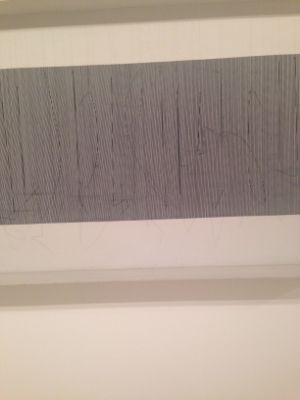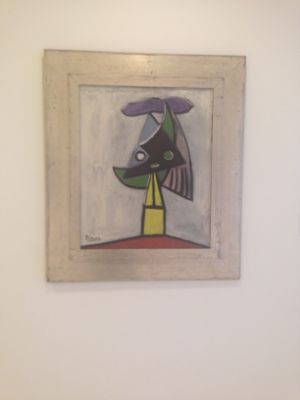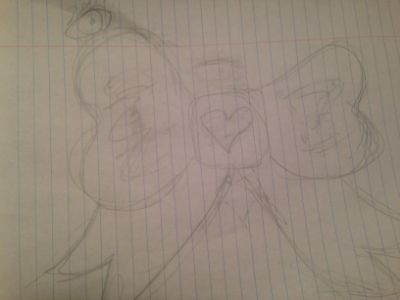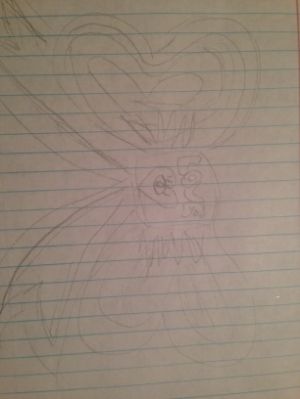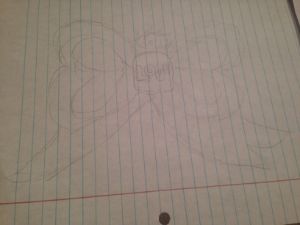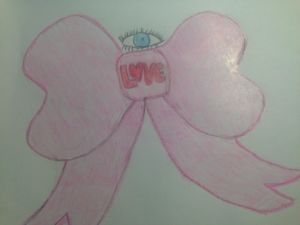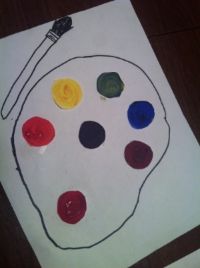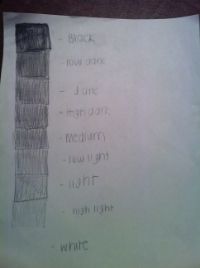Step 1-
Title of exhibit- Albright Knox Art Gallery
Theme- Paintings and pieces made by famous artists
Step 2-
Type of lighting- They used white spot lights located on top of the ceilings. Two of the spot lights would shine directly on each painting.
Colors on walls- On the walls they were painted white. I think they are white so the pieces can stand out because most of them are so colorful.
Materials in interior- Stairs and platforms are used in the gallery to resemble space. Also around some of the paintings there were little black railings.
Movement of viewer- Viewers viewing the art gallery walk around in amazement. They walk slow and like to stop and view the paintings. I would say their movements are slow and not rushed.
Step 3-
Artworks organized- The artworks were spread out to give enough space and time at one piece. It seemed to be that some circle and stripe paintings were together in certain rooms.
Artworks Similar- Some artworks were similar as in artists and the view of them.
Artworks different- Artworks were very different by their color, shape and size.
Framed- Each painting seem to be on 3-d poster boards. Some of the paintings have a black frame around them.
Identified and labeled- Next to each piece was a description of the picture, artist and year it was made.
Proximity- Each piece had a good distance to the next. Some pictures were whiles away where as some were about 30 inches.
1st pic-
Polarity
Peter Sedgley
Acrylic on canvas
Made in 1966
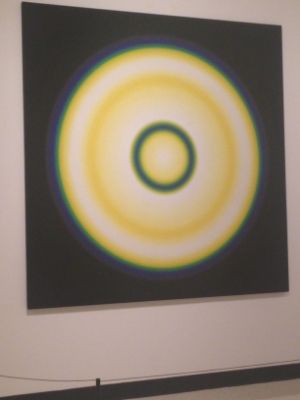
Looking at this piece looks like something you would see in a science class. It looks like somewhat of a planet. It also gives a illusion looking in the center of the circle. Using the element illusion can catch peoples attention to look at it at a different perspective. In the piece it shows thick lines of a circle and thin. The blend of colors make it look more interesting and pleasing to look at. I think the artist was trying to perceive a illusion and make people want to know more.
2nd pic-
Julio Leparc
Serie 14
Acrylic on canvas
Made in 1970
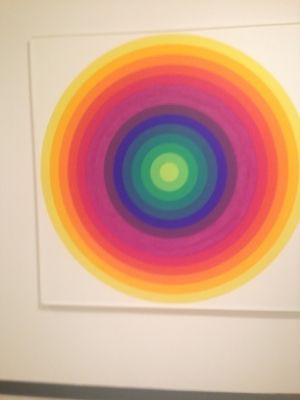
In this piece I see lots of beautiful colors, it like takes your breath away. It reminds me of a planet or something that is incredible but you don't know what it stands for. Color was definitely used in this piece to catch viewers eyes. This piece uses shape as well. The colors stand for a rainbow and are circular which defines each color. This piece reminds of a rainbow and of happiness. Looking at this piece can brighten up someone's day. I think the artist was trying to create a piece that defines happiness and a bright future. Bright colors make people look happy and alive as well as this piece.
3rd pic-
Karl Gerstner
Made in 1964
Lens Picture
Plexiglas lens mounted on paint
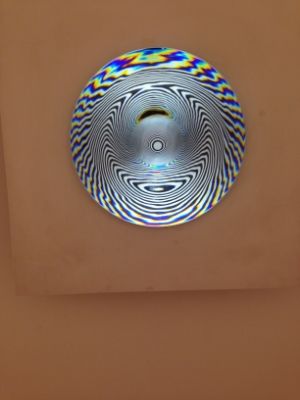
Looking at this piece was one of my favorites to look at here at the art gallery. I had to squint when looking to get the full effect, you squint without realizing it. The piece has illusions of circles that seem to keep circling. The whole piece is black and white with no other color. This piece reminds me of a plate or something you would see in a fun house. The artist uses color and illusion to show different types and techniques of art. I think the artist was trying to get a fun reaction from people. Most pieces you see don't give a illusion and are fun to look at.
